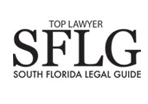Where the Money Goes: Off-shore Reinsurance, Part 5
The last post in this series.
What does it mean for consumers when reinsurers charge insurance companies five times the risk of loss? It means that $4 out of every $5 goes into the reinsurer’s pocket as pure profit. In an “honor among thieves” spin, reinsurers refer to it as “the cost of capital.” Elsewhere, it’s “undue profitability.”
The cost of the capital is always passed on in premium rates. The biggest question is, why is the capital so expensive? It doesn’t seem to be any more complicated than, “They charge that much because they can.”
The “new breed” of investors we’ve talked about in our past few posts demand profits that match or exceed what funds were raking in at the height of the mortgage-backed securities craze. They are demanding profits in the mid-teens to high 20s. After Katrina, investors who stepped in to recapitalize Bermuda’s reinsurers had returns of 26, 33 and 38 percent — all tax-free.
Property insurers in Florida, though, are limited by regulation to 3.7 percent annual profit on underwriting activities. It doesn’t seem a fair fight.
Again, the issue is that the more insurance companies pay for reinsurance, the less they are able to put aside. The policyholder surplus — the “first line of defense” for cat claims — is dwindling. In 2003, for every dollar of risk, the surplus held 65 cents. Now, only 42 cents of every dollar is set aside.
Industry analysts are doing more than raising eyebrows at this. Florida has seen a lull in hurricane activity over the past couple of years. In quiet years, insurers traditionally build up the surplus. That’s not happening.
And, premiums continue to climb, a home that costs $1,458 to insure now would have cost $850 in 2003. The market imbalance has wreaked havoc among insurance carriers. In the last year or so, a lack of capital has caused 10 companies to close, to be placed under regulatory consent orders or to have financial ratings withdrawn.
Off-shore? The Bermuda reinsurers that needed to be recapitalized after Katrina reported net losses of $2.1 billion right after the storm. In 2006 and 2007, the same companies reported record profits of $11.6 billion and $11 billion, respectively.
And yet, Florida regulators approved 45 property insurance rate hikes for “all-peril” policies (the most common type of homeowner policy) in the first eight months of 2010. The first eight months. The average rate hike ran to 13 percent.
Resource: Sarasota Herald-Tribune “Property Insurers Sending Billions Overseas” 10/25/10
Share




